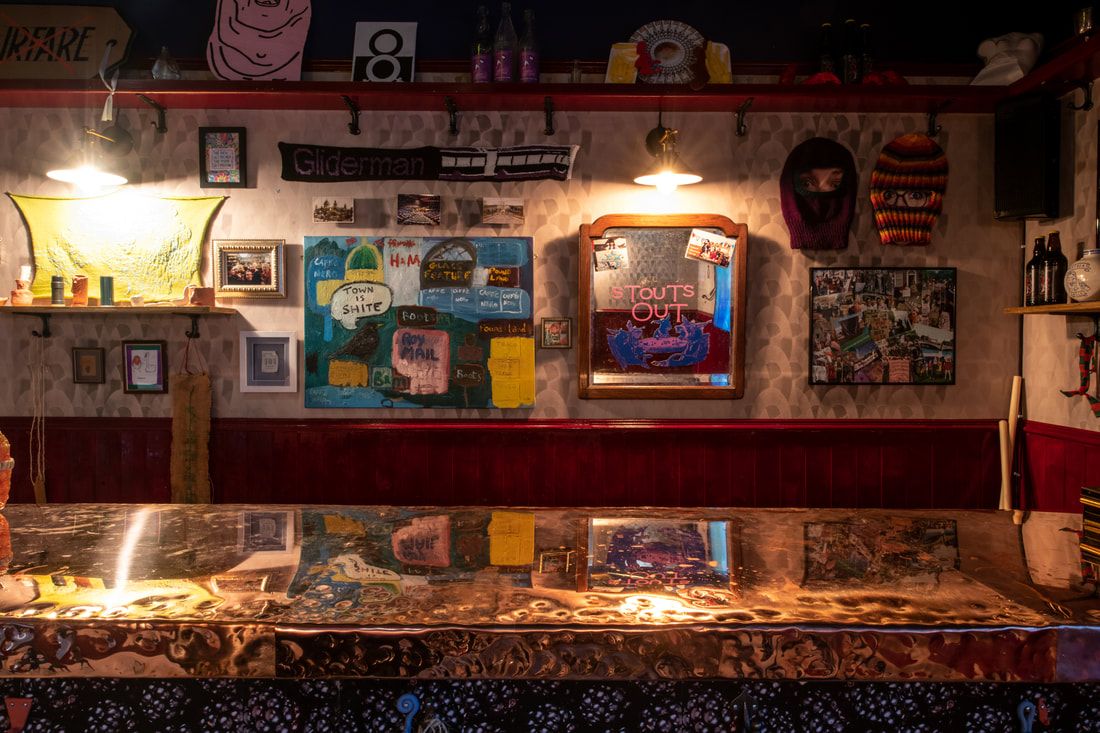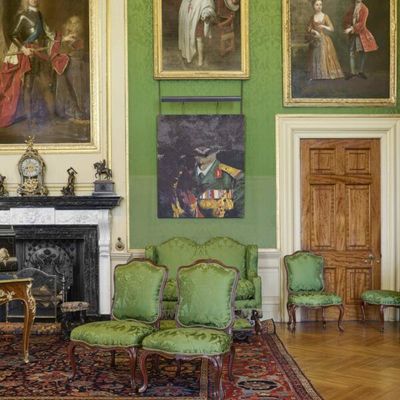THE Array Collective winning the Turner Prize in 2021 has taken the lid off Belfast's best-kept secret – that there is an incredible amount of visual artistic talent in the city. So the secret is out: we have risen above the confines of our limited borders.
In the scramble to look at changes in the 25 years since the Good Friday Agreement we should look at the generation of artists who are part of the Array Collective. Their art piece, The Druthaib's Ball, is back in the city. It is on display for the general public at the Ulster Museum until September. It even includes archive footage of the Good Friday Agreement being printed off.
The work was purchased for the Ulster Museum collection with help from the Art Fund and Department of Communities. I was curious to listen to people's reactions to it on home turf compared to going to see it in Coventry, where some of the references it displayed were perhaps lost on the English viewing public. When I visited, the people inside the Sibín were sitting motionless, eyes glued to the triptych video on the wall inside, but tended to leave once the video began to loop. Some were silent and a bit shell-shocked, others laughed. Stay and spend some time there, there is so much inside the Sibín itself it takes a while to take it all in with your eye. Do you notice the the Stena Line mop or the beer mats? The newspaper on the bar tables gives more information on all the artefacts, be it a limited edition dole ticket or a rainbow balaclava "ready for the big queer agenda".
The eleven strong group – Sighle Bhreathnach-Cashell, Sinead Bhreathnach-Castell, Jane Butler, Emma Campbell, Alessia Cargnelli, Mitch Conlon, Clodagh Lavelle, Stephen Millar, Laura O 'Connor and Thomas Wells – are from Ireland North and South, England and Italy and rose to international recognition with what is probably one of the best-known contemporary art prizes and as a result of this platform have continued to be invited to bring their particular style of art to places, be it Glastonbury, invitations to speak at lectures, art colleges, art therapy conferences and Galway Culture Night, where Sibín was first exhibited in Ireland. They are riding the wave of the Turner Prize and will continue to make the most of this one-in-a-million opportunity.
Another feature of their generational collective attitude is to sometimes include other artists and performers to spotlight their talents as well, be it Emma Brennan or Meabh Meir livestreamed from the Giants Ring (which I had to get up very early to watch) or inviting artist Davy Mahon to join them at Glastonbury. They continue in this vein by having a series of talks and in August/September a week of new performances by the collective and invited artists.
The Turner Prize was conceived to start debate about contemporary art and each year its £25,000 prize, celebrity audience and exhibition draws thousands of people to ponder and laugh, discuss and rejoice, think about and contemplate art. There was some condescending chat in the British press about the winners but my favourite retort was by Declan McGonagle, direct from Donegal, in the Guardian letters page, saying of Jonathan Jones' patronising article: "Not the first time unconscious colonialism has been evident in metropolitan responses to all things Northern Irish."
@UlsterMuseum @array_studios seeing how the locals take it now it’s back in #Belfast #turnerprize pic.twitter.com/qdVB6ZiSeC
— Bronagh Lawson (@CreativChangeNI) February 26, 2023
Art is many things to many people going on all at the same time, many traditional artforms are very relevant alongside new and changing ones. Just when you might have got your head around something, creativity shows another face. In a recent article about the number of high-level women who have resigned at the peak of their careers I was struck by the comment that one women "wanted to be able to get up and smell the roses one day" instead of doing a 9 to 5 job. For me, many artists' ideal is to be able to do just that for the whole of our lives.
For Array the push for societal change and the communal energy of playing and creating together periodically allows them to do just that. Freedom of thought and creativity is a much under-recognised transformative energy and the Belfast creative community simply oozes it. Their socially-engaged activist work stands on the shoulders of all who went before them but the banner work that evolved for the duration of its run in Coventry is a simple way to focus on different inequalities, be it women's rights or the International Day of Solidarity with the Palestinian People.
All of the museum labels are bilingual (Irish and English) and perhaps this is what the whole museum will be like further down the line.
There is a warning before entering the exhibition: "This exhibition contains materials responding to social issues such as body autonomy, language and culture, LGBTQ+ rights, mental health and the environment" but there is a space to look at documentary footage of the artists making the work and a space to give feedback. While filling in mine the two teenagers beside me when asked said they were not really sure what it was about. But their parents soon came to explain some of the issues highlighted in the piece and the more intergenerational discussion that goes on the better.
The Druthaib's Ball is at the Ulster Museum until September 3, open Tuesday to Sunday 10am to 5pm and on Mondays during school and bank holidays.







